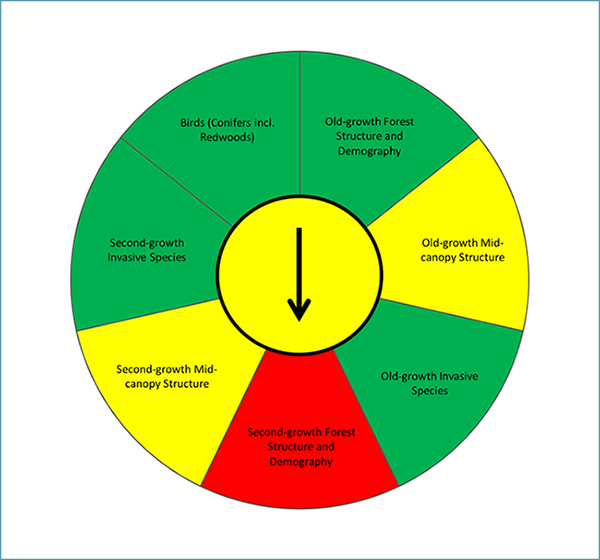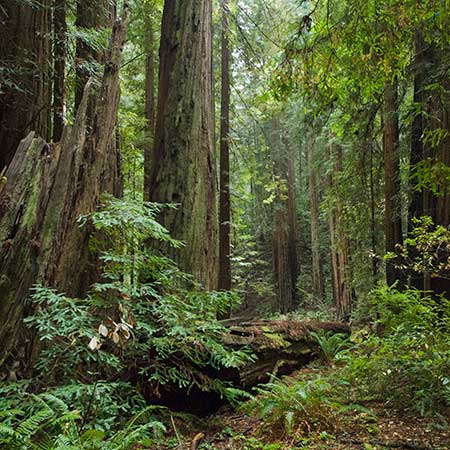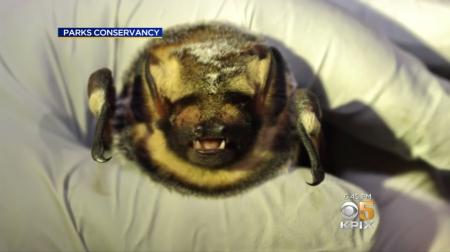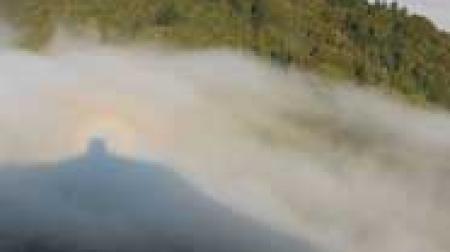Summary
Old-growth coast redwood forest communities are doing well, but second-growth redwood forests, which make up the majority of the redwood forests on Mt. Tam are in Fair condition with an overall Declining trend.
Invasive Species
Due to the generally low understory light levels, non-native, invasive plant species are a minor problem for this community.
Birds
Assessment of the avian community associated with redwood forests indicates that all expected species are present and Northern Spotted Owls (Strix occidentalis caurina) are doing well across the region in this habitat type.
Habitat Structure
The major stressor to this habitat is Sudden Oak Death and its impact on tanoaks (Notholithocarpus densiflorus) that are common understory associates within redwood forests. Second-growth forests are in cautionary condition due to a lack of forest structure and age diversity. In many stands within the Mt. Tam area of focus, nearly 100 percent of the tanoaks have been impacted. These trees are stuck in a cycle of stem death, followed by root crown stem regeneration, followed by stem death. This turns them from mid-canopy redwood forest components to lower canopy and shrub layer components. It also adds a great deal of potential fire fuel to the forest floor.
resources




